There’s been a disturbing trend in the natural health sphere for a while now and I think it’s time to talk about it.
Natural health bloggers (see Wellness Mama and Pronounce Skincare, for example) have been spreading the word about their amazing homemade sunscreens. They make all sorts of claims about the dangers of store-bought sunscreens, which I’m not even going to touch today.
If you don’t want to use ‘chemicals’ and ‘nasties’ on your body, that’s your prerogative (I’d like to remind you however that everything is a chemical, so good luck avoiding them).
But what I can’t do is stand idly by as they spread misinformation about the safety of making your own sunscreen at home. There are undeniably glaring holes in their knowledge and logic and its putting them, their families, and their followers at risk.
Let’s dispel the falsehoods surrounding DIY sunscreen and discuss why you should never make it yourself.
SPF must be measured by scientists in clinical trials
Despite what a lot of these self professed ‘wellness’ advocates seem to think, SPF is a formal measurement that cannot be ‘figured out’. You can’t eyeball it, nor even come up with anything vaguely approximating the SPF without legitimate scientific trials and tests.
There are so many factors that affect a formulation’s SPF and it’s not just the weight/weight percentage of sunscreen ingredient to cream. People need to stop throwing out the phrase “it’s about an SPF of 35-40” or “it’s definitely at least SPF 20 because it’s 20% zinc oxide”. There’s a reason sunscreen bottles say a specific number on them – because if it’s not specific, it’s no good.
Ingredients do not have the ‘natural SPF’ they claim
Oils like carrot seed oil are often touted – with no research – to contain ‘natural SPF’. This is not true, at least not to the extent they claim. They have very little SPF, no more than many other products do.
The study many of these so-called DIY formulators seem to be referencing on carrot seed oil actually claims that “PRODUCTS containing carrot seed oil have an SPF of 38-40”. This study was in reference to natural sunscreens with this ingredient, NOT the oil itself.
In another study it was found that carrot seed oil clocked in at a dismal SPF of 1.3. Goes to show how much research these people are doing, huh?
An SPF of 7 is not enough
Let’s give them the benefit of the doubt and say that some of their ingredients have some SPF. Even if these so called ‘natural SPFs’ were accurate, those with very dark skins are estimated to have an inbuilt SPF of up to 13.4 as compared to those with light skin. This means that these ingredients (and the end products) probably offer you no more protection than someone with a deep skin tone has. And those people still get skin cancer!
Sunscreens of SPF 30+ are recommended to gain significant protection. And boy do these recipes not fit the bill. Over on Realize Beauty they tested the actual SPFs of some of these formulas, and they’re about as bad as you could expect from something made in your kitchen, ranging from 7-12.
No good sunscreen will let you tan but not burn
I don’t care what you have to say, there is no such thing as a safe tan unless it’s from a bottle. If you’re tanning, you’re getting UVA damage which causes DNA mutation and thus skin cancer and free radical damage. Claims that their sunscreens help them to tan slowly and safely are completely misguided. If you’re getting a high enough broad-spectrum protection to stop UV damage, you won’t be tanning either.
While the sunscreen might stop you from burning if it uses an ingredient like titanium dioxide that only blocks UVB and lets in UVA, this won’t give you the protection you need. UVA damage is just as bad and is thought to be the cause of many if not most skin cancers. No good store bought sunscreen will let you tan, and that theirs’ does is a testament to its inefficiency.
SPFs cannot be added together
Lots of these ‘recipes’ for sunscreen suggest that by putting lots of ingredients together with small amount of SPF, they are creating a high SPF end product. Even if somehow these ingredients actually have the SPF they claim they do (regardless or formulation, percentage and application method, which make a massive difference) it does *not* work out that you can add two things with SPF 10 together and get SPF 20.
Think about it – if you mix together two sunscreens in a bowl, each with SPF 50, are you making SPF 100? No! You’ll have twice as much SPF 50!
The same goes for mixing oils and extracts and whatever else. Equal parts things with SPF 2 + SPF 4 + SPF 9 makes SPF 5 (in a perfect world), not SPF 15.
Formulation is not as simple as mixing in a bowl
Without proper ways to disperse the oxides, these ingredients ‘ball up’ and create a mixture that leaves many microscopic patches of unprotected skin. Think about it, why would companies spend millions on formulation if they could just chuck some zinc oxide in a cream and go? People spend years of their life learning exactly what chemicals interact with one another and are safe and effective in certain concentrations.
The other ingredients play a vital role in the effectiveness and longevity of the formula and you’ve just got no assurance with a homemade sunscreen that it’ll even last over any amount of time. A favourite skin care enthusiast and cosmetic chemist of mine Michelle of Lab Muffin has produced a youtube video covering this topic from a cosmetic chemist’s perspective. She knows a lot more than me about formulation, so you should definitely go check it out!
But, on a lighter note, by far my favourite nugget of wisdom was from this commenter who suggests that “moving around means you get less sun exposure”. Misinformation is everywhere.
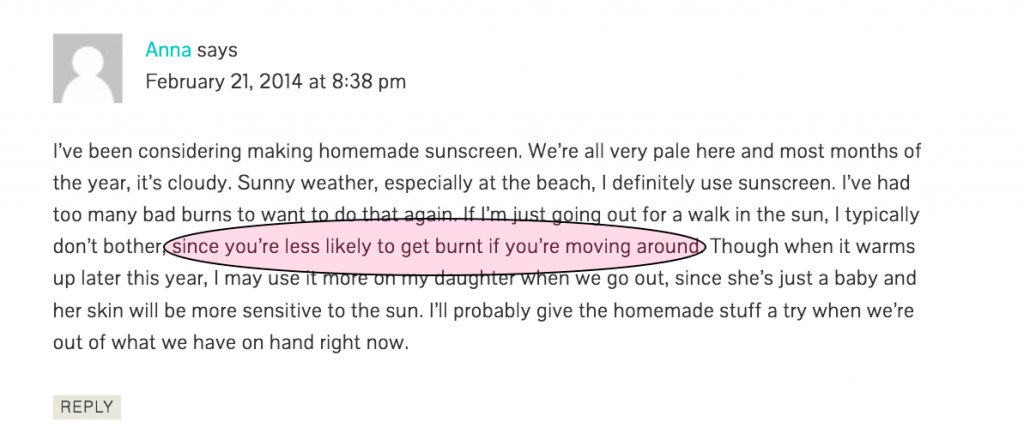
I hope this raised some questions for you or your loved ones that will make you question the legitimacy of what you see on the internet. It’s not black and white and some people online have not done their due diligence nor have your best interests at heart.
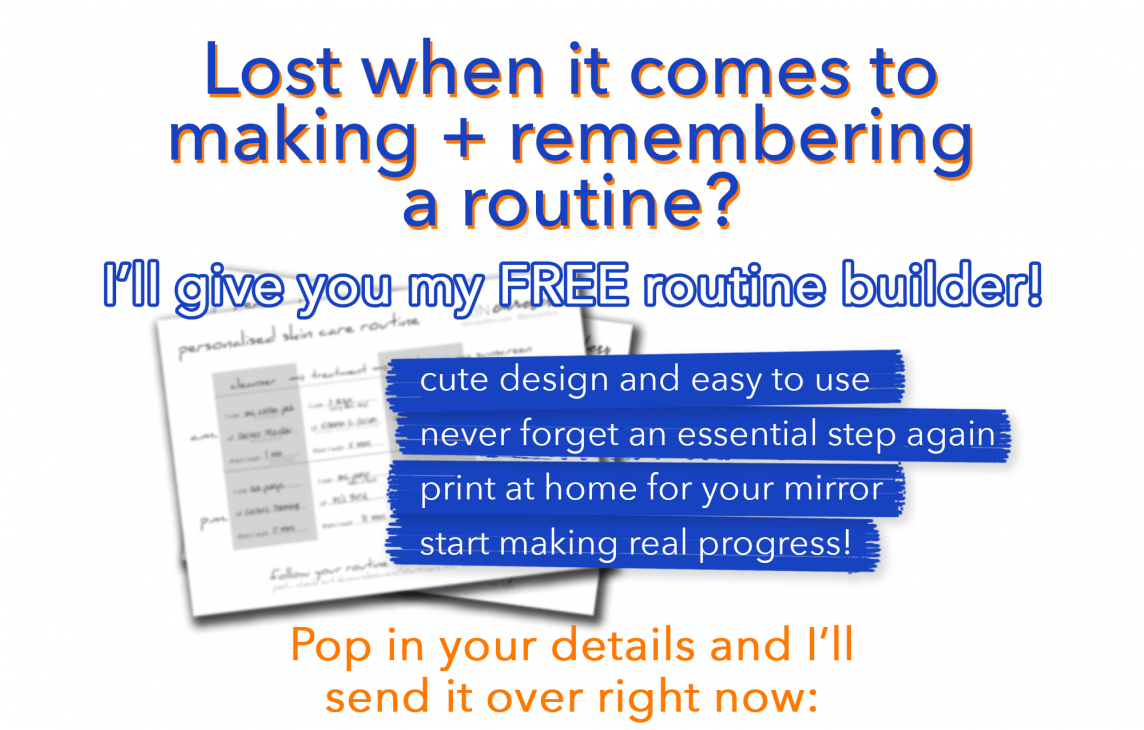

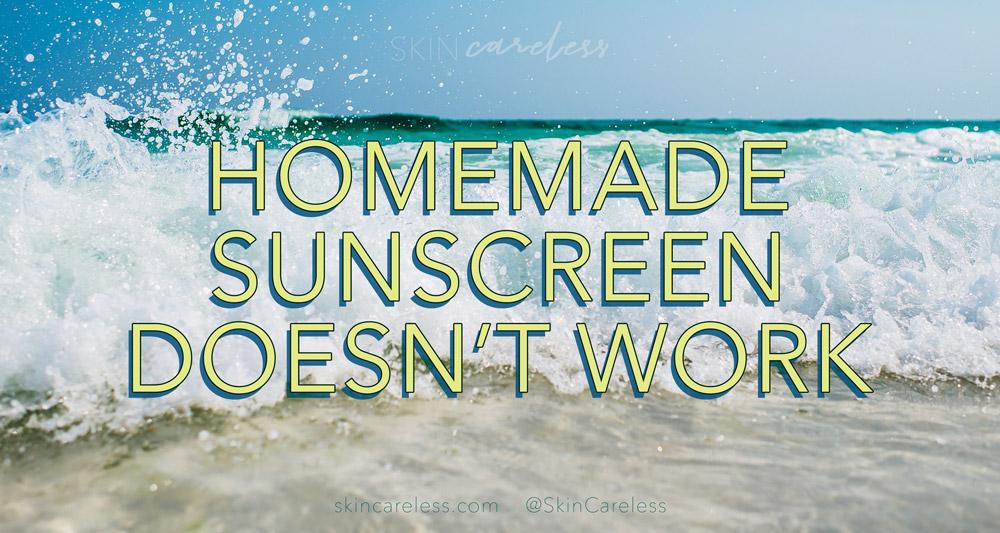

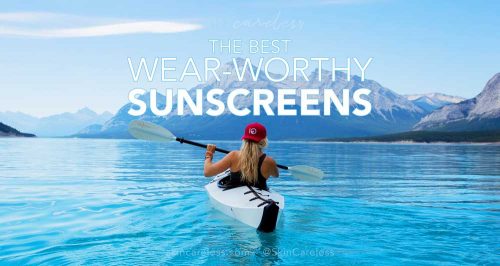
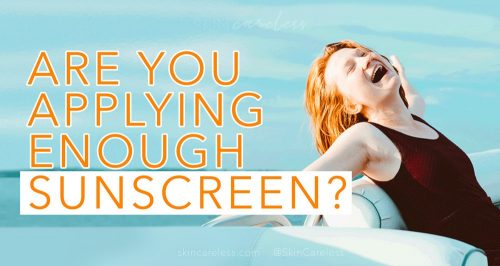
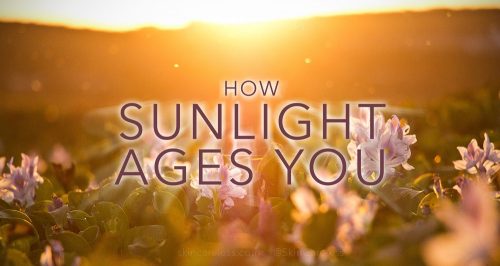
[…] lemon juice and related topics like DIY sunscreen overtook the early beauty internet sphere. People, in their eagerness to share accessible ideas, […]